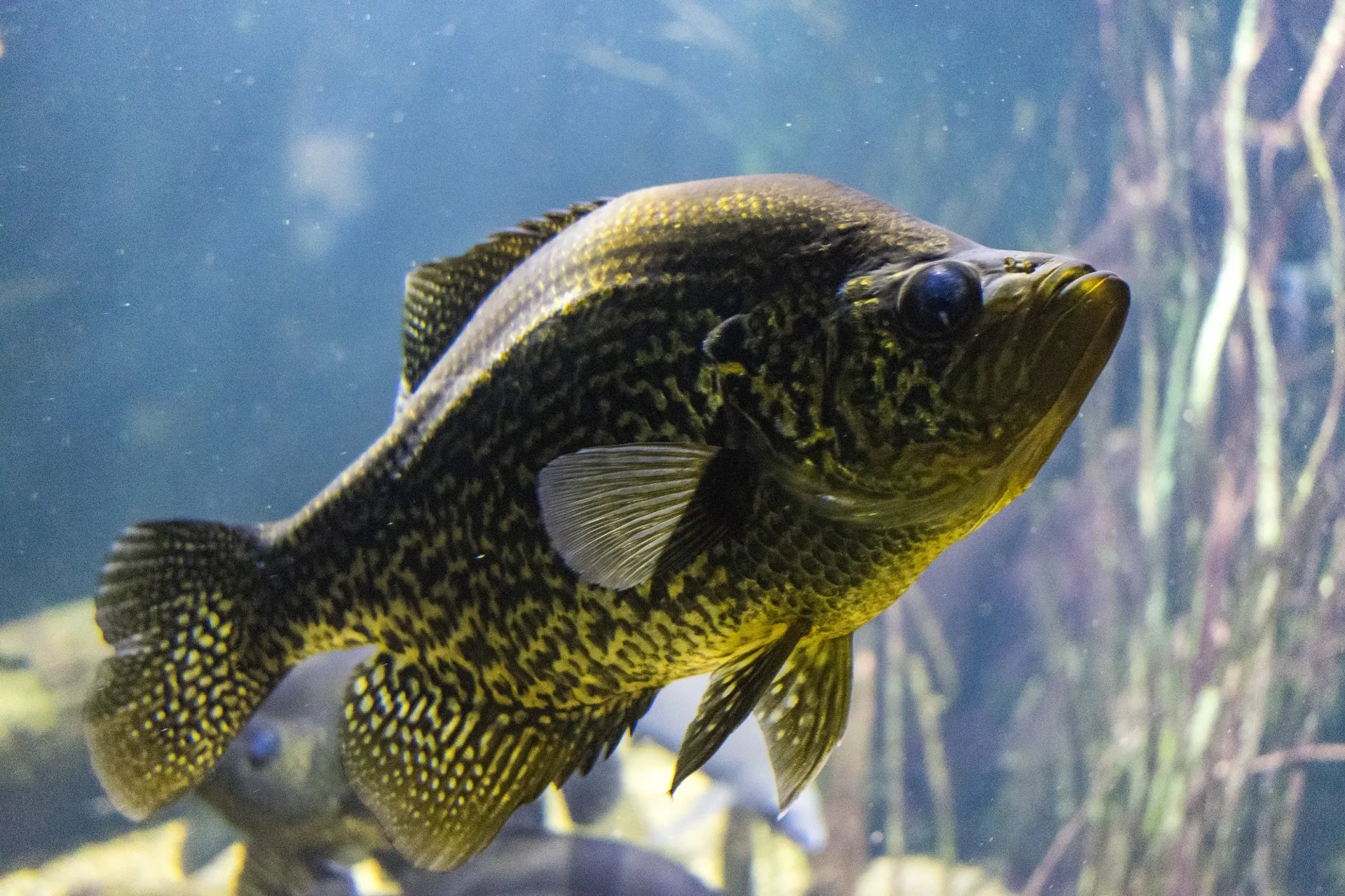Chattanooga, Tenn. (Aug. 12, 2021) – Whether it’s minuscule rivulets winding through pastures, rushing mountain streams or mighty courses like the Tennessee River, the Southeast is a tightly woven aquatic network. The same waterways used for recreation and drinking also abound with aquatic life, but easily identifying which fish species you’re living cheek and gill with can be a difficult proposition.
Enter the Tennessee Aquarium’s Freshwater Information Network (FIN).
Created in 2018 through a partnership between the Aquarium and Tennessee Tech University, FIN is an online resource designed to provide easy means for academics and the public to identify more than 400 species of fish living in more than 75 watersheds.
Through easy-to-use interactive maps that integrate decades of museum records and user-reported species sightings, scientists, teachers, anglers, parents and curious residents can locate their local watershed and see what’s beneath the surface. Think of it as a kind of “Facebook for Fishes.”


“Here in the Southeast, we have an underwater rainforest right in our backyard. FIN is a portal to dive into this incredible aquatic diversity, much of it found nowhere else on Earth,” says Dr. Bernie Kuhajda, the Aquarium’s aquatic conservation biologist. “With the watershed search features, a teacher or student can enter their school or home address and find out what watershed they live in and all the fish species that occupy those waters.”
FIN’s databases cover watersheds in the Tennessee, Cumberland and Mobile Basin drainages. The land area this represents is just 1.6 percent of the United States, but it serves as habitat to nearly half of the country’s native fish species.
The scientifically verified results returned by a FIN search can be eye-opening for those living in its coverage area. For example, Middle Tennessee-Chickamauga — Chattanooga’s local watershed — is home to 100 different species of fish, more than 10 percent of all fish species found in the United States. Area residents might not realize it, but they’re often just a walk or a short drive away from waterways that contain venomous-spined Mountain Madtoms, brilliantly colored Longear Sunfish or titanic river giants like Blue Catfish and Paddlefish.
By accepting — and later verifying — user-reported sightings, FIN was designed to improve and become more robust with time and use. Recently, the site received a digital facelift and a suite of improvements designed to improve its ease-of-use and draw in more non-academics.
In addition to a refined layout and better search capabilities, the process of submitting and verifying user-reported fish sightings has been simplified. Combined, these changes to the newly upgraded site should make it even easier for Southeasterners to learn more about — and hopefully want to preserve — the aquatic life in their backyards.
“These changes resulted in a beautiful classification system that allows front-end visitors to easily find exactly what they’re looking for,” says Mack Lunn, the associate director of iCube, Tennessee Tech’s pioneering technology innovator and the source of FIN’s upgrades.


The changes made to FIN were led by iCube students, who worked in consultation with Aquarium scientists to plan and specifically target the upgrades. The project was designed, from the ground up, to improve the site’s usability and to realize its initial goal of bridging the gap between scientists and the public, Lunn says.
“The nature of this website requires catering to several audiences: the curious public, the Tennessee Aquarium Conservation Institute and scientists in the field who catalogue their finds,” he says. “Ensuring that each of these target audiences has a seamless, easy user experience was imperative, providing our students with an excellent learning opportunity.”
For years, iCube has served as a frequent partner with the Aquarium. Using cutting-edge technologies, the university’s students have tackled everything from virtual reality experiences designed to teach users about stream ecology to helping the Aquarium’s Electric Eel, Miguel Wattson, to make a splash on Twitter.
Lunn says any opportunity to work with the Chattanooga institution is “a dream come true” for his students.
“It’s one thing to go to university and learn how to program,” he says. “It’s completely different to take your family to the Aquarium and point out things that you contributed to that are live and on display.”
Robust websites and smartphone apps like National Audubon Society’s Bird Guide and Cornell Lab of Ornithology’s Merlin Bird ID have long served as pocket-quick digital tools for birders. The hope is for the newly upgraded FIN to serve a similar role for those seeking to know more about Southeastern fishes, whether they’re a university researcher or a science-curious gradeschooler.
“When I was young, I thought that if I wanted to study beautiful, colorful fish, I needed to go swim in coral reefs or head to the Amazon,” says Dr. Anna George, the Aquarium’s vice president of conservation science and education. “What I didn’t realize is how many beautiful fish we have right here in our backyards in the Southeast.
“What excites me is knowing that, for the students of today, FIN will offer an easy resource to find out more about what they’re seeing and be part of helping us to protect it.”
To learn more about the fish in your backyard or report a fish species sighting, visit the Freshwater Information Network (FIN) at tnacifin.com. More information about Tennessee Tech University’s iCube is available at tntech.edu/icube/